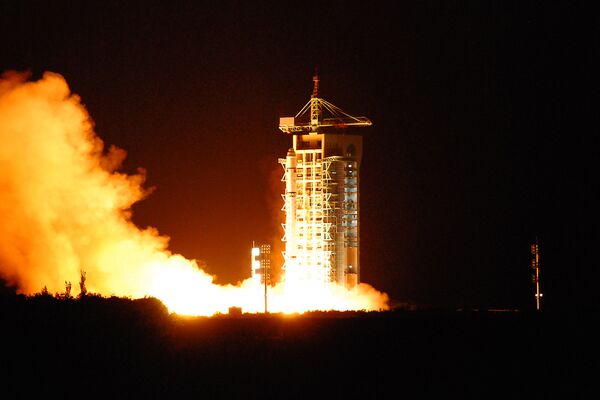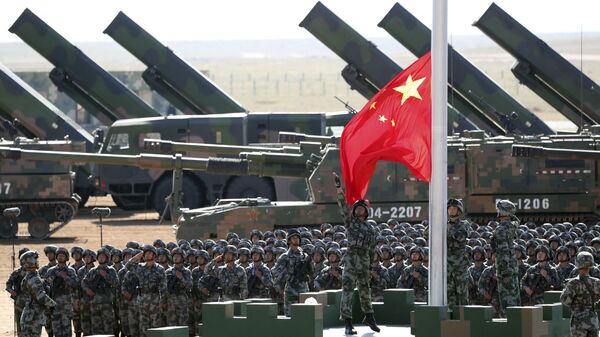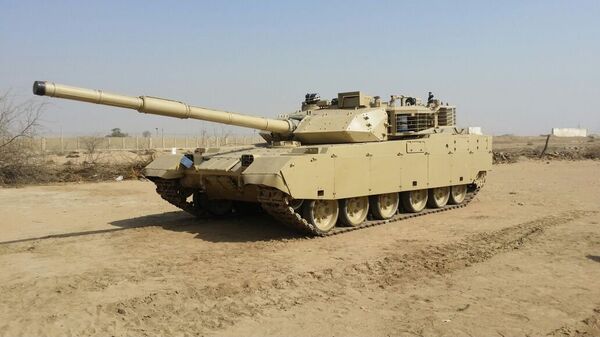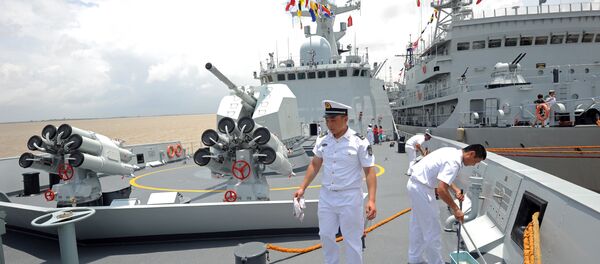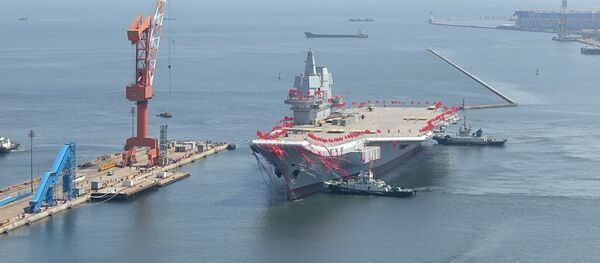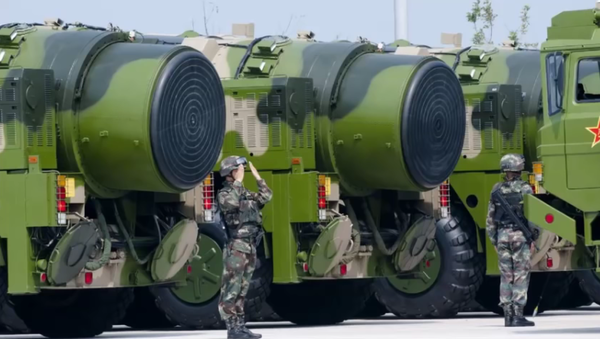China must have a powerful armed forces able to fight and win wars across all theaters, Xi said Wednesday at his speech before the Congress in Beijing on Wednesday. According to the leader, the country must build a powerful ground forces, an ocean-going navy, a modern air force, a strong rocket force, and a capable strategic support force. Furthermore, the military must have strong joint operations capabilities between theaters, and a modern combat system with 'distinctive Chinese characteristics', according to the General Secretary.
Xi vowed that the transformation of the world's largest standing army would "gather momentum and persist" to meet China's evolving needs. "China's dream of a strong national army will be realized," the leader stressed.
'Quality Has a Quality All Its Own'
Commenting on the present state of China's armed forces, RIA Novosti military observer Andrei Kotz pointed out that the pace of its development has been impressive, especially when measuring funding outlays. "This year alone, China's defense budget grew by 7% to over 78 billion yuan, or about $156 billion US. This is according to official data. According to unofficial estimates, when taking into account secret budget articles, China's military spending has already topped $200 billion."
In spending, China's spending is already second in the world, and first in terms of total manpower (topping over 2.18 million, according to the 2017 edition of The Military Balance by the International Institute for Strategic Studies.
"And quantity is quickly turning into quality," Kotz emphasized.
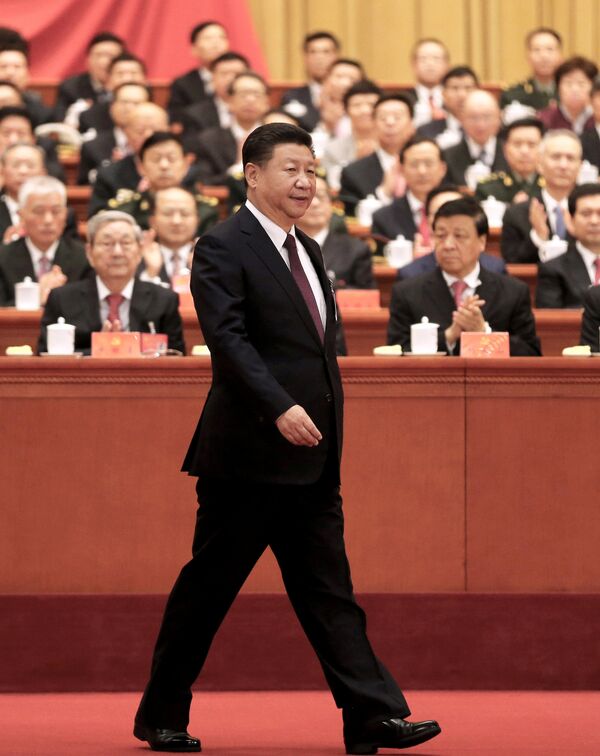
Vasily Kashin, an expert on the Chinese military and senior researcher at the Russian Academy of Sciences' Institute of the Far East, pointed out that the US Department of Defense has already created and is implementing what it calls the Third Offset Strategy, a program aimed at outmaneuvering the advantages of its potential adversaries using emergent technologies.
"It consists of the concentration of resources in breakthrough areas," Kashin explained. These include nano- and biotechnologies, artificial intelligence, robotics, hypersonic weapons, cybersecurity and more. "The ultimate goal of the program is to create an arsenal of weapons featuring qualitatively new capabilities – in effect, an 'army of the future.'"
Globally, the expert noted, the Pentagon's strategy is aimed primarily at containing China militarily, something made clear but materials found in the US media, the statements of US politicians, and publically available documents on military aims. Naturally, he stressed, Beijing has no interest in allowing Washington to gain such an advantage in these breakthrough areas.
Out With Old Hardware, In With New Hardware
According to Kotz, among the most ambitious tasks outlined by Xi regarding the PLA's modernization is the call to revitalize the ground forces. Presently, China has roughly 8,000 main battle tanks, a third of them consisting of technologically and physically obsolete Type-59s, a copy of the Soviet T-55 dating back to the late 1950s.
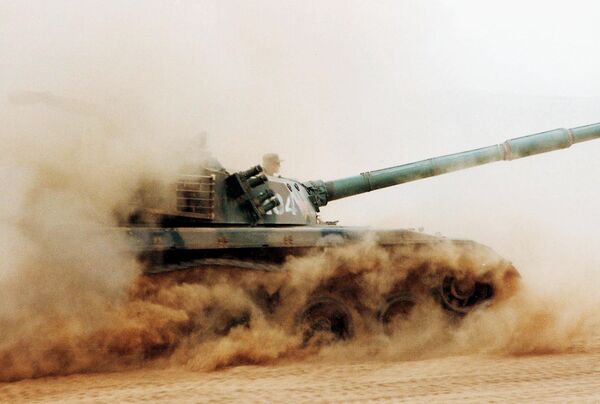
"In accordance with the rearmament program of the tank forces, these 'veterans' will gradually be retired and replaced by modern Type-96s and Type-99s. Furthermore, this year, mass production began on the VT-4, which specialists consider an intermediary design between third and fourth generation tanks (the latter, for example, includes the Russian T-14 MBT, built on the Armata platform)."
"A similar situation exists when it comes to other Chinese armored vehicles, artillery, air defense systems, etc.," the journalist wrote. "Clones of Soviet systems from the 60s and 70s are gradually being retired and replaced with more modern Chinese designs."
The same thing is happening with the PLAAF, the People's Liberation Air Force. In 2013, China officially ceased production of the J-7, a licensed MiG-21 clone, which served for many years as the backbone of China's tactical aviation. Replacing them are more modern J-10 and J-11 multipurpose and air superiority fighters, the latter a copy of Russia's Su-27 fourth gen fighter.
By 2019, China plans to begin the introduction of its new fifth generation design, the J-20.
In the meantime, China still lacks a modern, truly Chinese strategic bomber, its fleet consisting of the H-6, an design based on the Soviet Tu-16. According to Kotz, based on its ambitious plans for the rest of the military, the PLAAF will probably develop a new design in time for the 2035 deadline.
Navy With a Global Reach
The pace of modernization of the People's Liberation Army Navy has been another major surprise for experts, Kotz noted. "In just ten years, the country's leadership was able to seriously stimulate the program to build surface ships and submarines of all classes, including cruisers and aircraft carriers. The greatest interest has been in the building up of China's expeditionary potential. Special attention is being paid to the construction of ships capable of transporting large contingents of equipment and arms across long distances."
The creation of the Donghaido was a particularly important feat, according to Kotz, given that the United States is the only other country in the world with an MLP design. "The Americans completed the construction of their first MLP-class ships in 2013, just two years ahead of the Chinese. The Pentagon classifies MLPs as mobile expeditionary bases designed to provide for large-scale landing operations at great distances from friendly local coastal infrastructure. In effect, the Donghaido is an autonomous naval unit able to establish a foothold on enemy shores for the landing of the main forces. For this, the ship is equipped with a capacious hold, its own flotilla of landing craft, helicopter landing pads, and a contingent of servicemen."
Furthermore, according to Kashin, China's third aircraft carrier is likely to feature a string of major advances, including an electromagnetic launch mechanism, a nuclear-powered drive unit, and other advanced technologies. Furthermore, it should be significantly larger than the Lioning and the Type 001A. "It will be able to carry more fighters and support aircraft, and spend significantly longer periods at sea. These are the ships that will be used by China's political and military leadership to be able to project force anywhere in the world's oceans. China today already has the technical capabilities to create surface vessels at this level."
Space & Breakthrough Technologies
As in other areas, China's efforts to catch up to the US in breakthrough technologies are also continuing apace. In 2016, the Pentagon confirmed that US intelligence had picked up seven test launches of China's DZ-ZF hypersonic glider, (Pentagon code name Wu-14), a technology with prospects for delivering precision strategic strikes against enemy targets that are unstoppable by existing or prospective missile defenses. Accelerating to speeds of over 6,000 km per hour, experts say that it is simply impossible to intercept such a system.
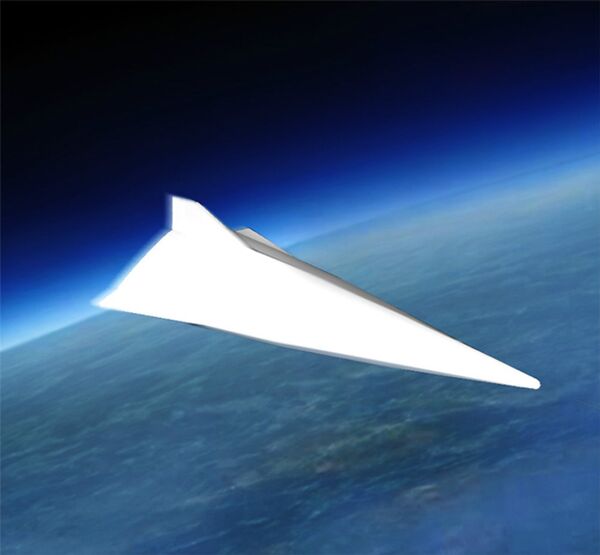
At the same time, China is actively pursuing the development of next-gen unmanned aircraft. In February 2017, the China Academy of Aerospace Aerodynamics announced that it had created a solar-powered drone capable of staying in flight for months at a time.
And although the DZ-ZF is a future technology, China has also recently begun the deployment of the Dongfeng-41, its brand new intercontinental ballistic missile, a MIRV-capable weapon delivering 10-12 nuclear warheads distances up to 15,000 km.
Finally, China can be expected to continue to strengthen its space-based capabilities, including its constellation of satellites. The country is already second in the number of military satellites deployed, behind the United States, and continues to build up its dual purpose BeiDou satellite navigation system. In late 2015, the country began the construction of a space-based missile attack warning system.
"Against the backdrop of such a mobilization of Chinese military power, the strengthening of military ties between Russia and China cannot but cause concern for the US," Kotz stressed.
"It's worth recalling that in June, Russian Defense Minister Sergei Shoigu signed and Chinese counterpart Chang Wanquan signed a roadmap for the development of Russian-Chinese relations in the defense sphere between 2017-2020.Theoretically, an alliance between the strongest military powers in Eurasia could challenge even the combined forces of NATO. Of course, something like this may be a long way off, but as experts have said, even the current level of cooperation between the armed forces of the two countries is already at historically unprecedented levels." Regular joint exercises, military games, an exchange of experience, etc., all of this indicates that China considers Russia to be a friend, rather than a potential adversary, Kotz concluded.
